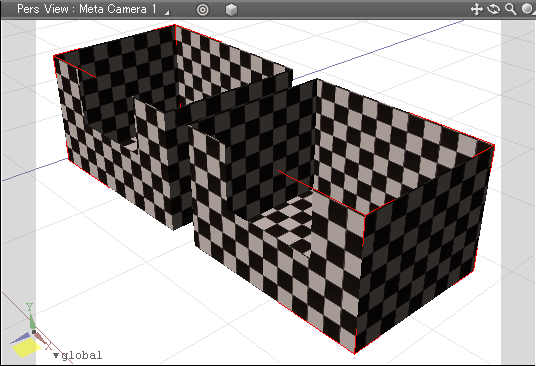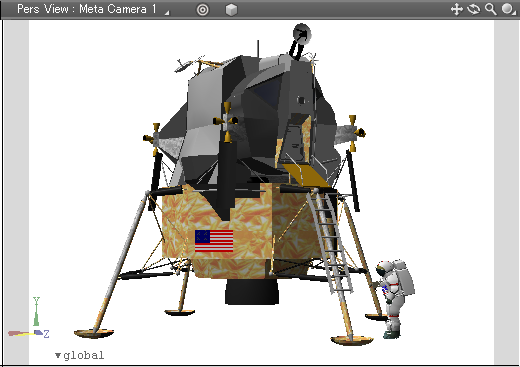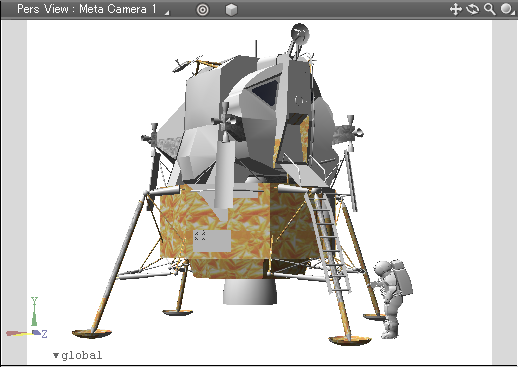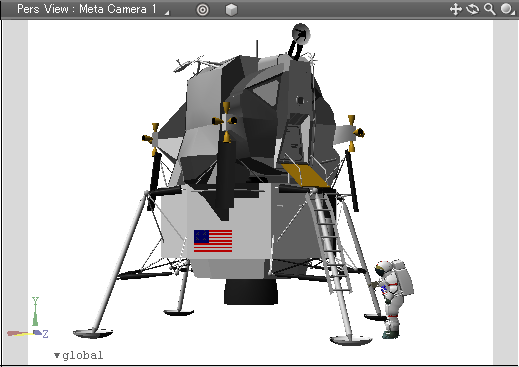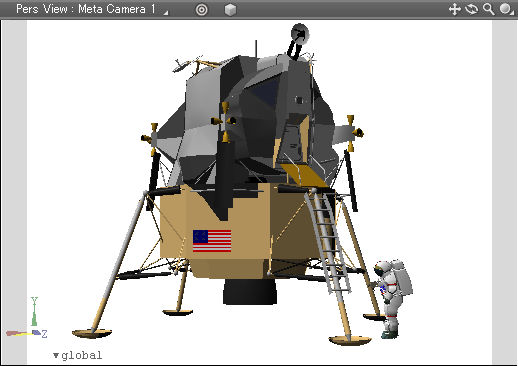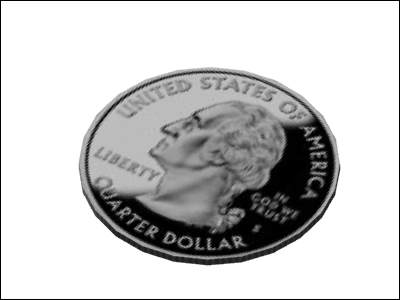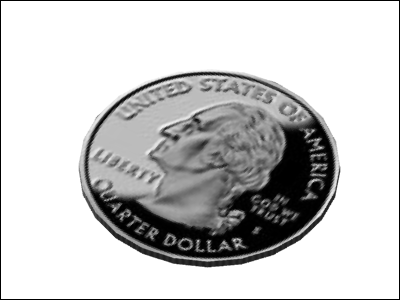Google SketchUp Import
Google SketchUp Import makes it possible to import native Google SketchUp .skp files into Shade3D.
Data that can be imported includes geometry, materials and camera information. You can select the data to import in the import dialog box.
On Windows, .skp files saved in SketchUp versions 5, 6, 7 and 8 are supported. On Mac OS X, .skp files saved in SketchUp versions 5, 6, and 7 are supported.
Select File > Import > SketchUp... to select and import the desired file into the current Figure Window.
Import Dialog Box
Import settings can be specified here.
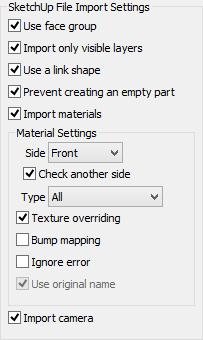
- Use Face Group
- Surface attributes are applied to individual faces of the polygon mesh when importing. This makes a more accurate representation in Shade3D possible. Furthermore, this usually results in a smaller file size. If this checkbox is unselected, the polygon mesh is divided by the number of materials when imported, as in previous versions of Shade3D.
- Import Only Visible Layers
- Looks at the visible/hidden settings of each layer in the skp file and only imports the visible layers. This will import the object as it is seen in SketchUp. In the case of files with several hidden layers in SketchUp, such as guide objects, this option may reduce the import time.
Here this model is shown with all layers visible. The shapes used as guides are also shown.
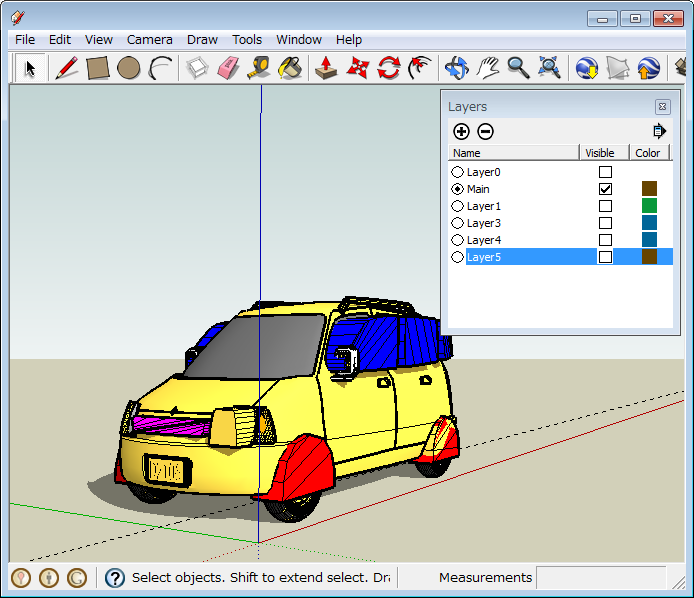
By making only the main layer visible, the completed model can be seen.
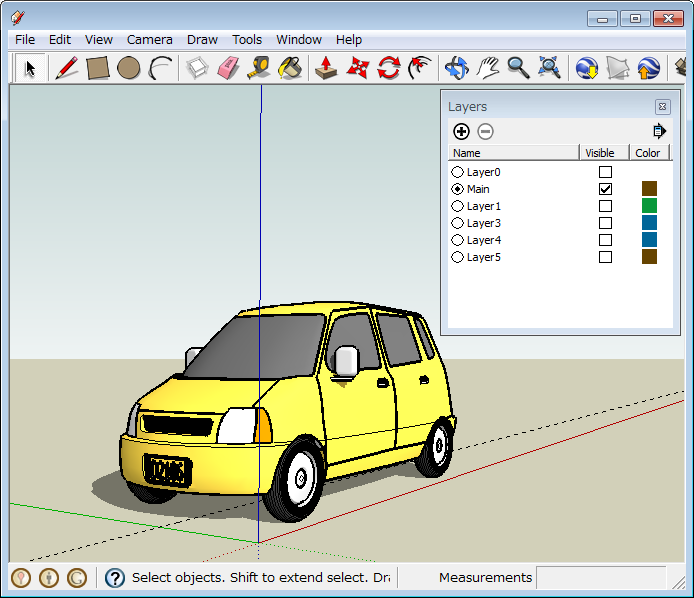
Here only the visible layer (the main layer) of the model has been imported into Shade3D.
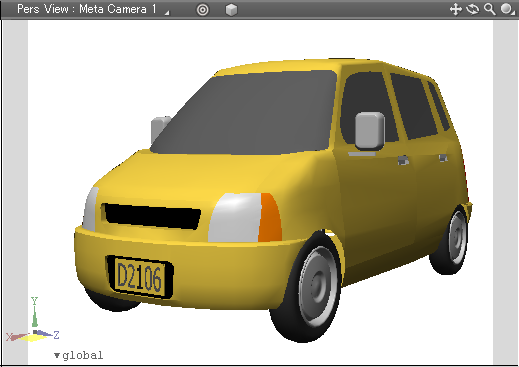
- Use a Link Shape
- Using link shapes will import the model without duplicating identical shapes. This can reduce the import time and file size.
- Prevent Creating an Empty Part
- During the process of recreating the SketchUp tree structure, Shade3D may sometimes create empty parts. This option will remove those parts.
- Import Materials
- Materials applied to the skp file will be imported. Materials are imported as a combination of images and master surfaces.
- Material Settings
-
- Side Pop-up Menu
- Select Front, Back or Layer for the materials to import.
In SketchUp materials can be applied to both the front and back sides of a face. In Shade3D, however, only one set of surface attributes can be applied to each face. Use this option to select whether to import the material set to the front or back side of each face.
This model has materials set to both sides of the roof. The front sides are visible here. The faces used for the rest of the building have materials set to only the front sides.
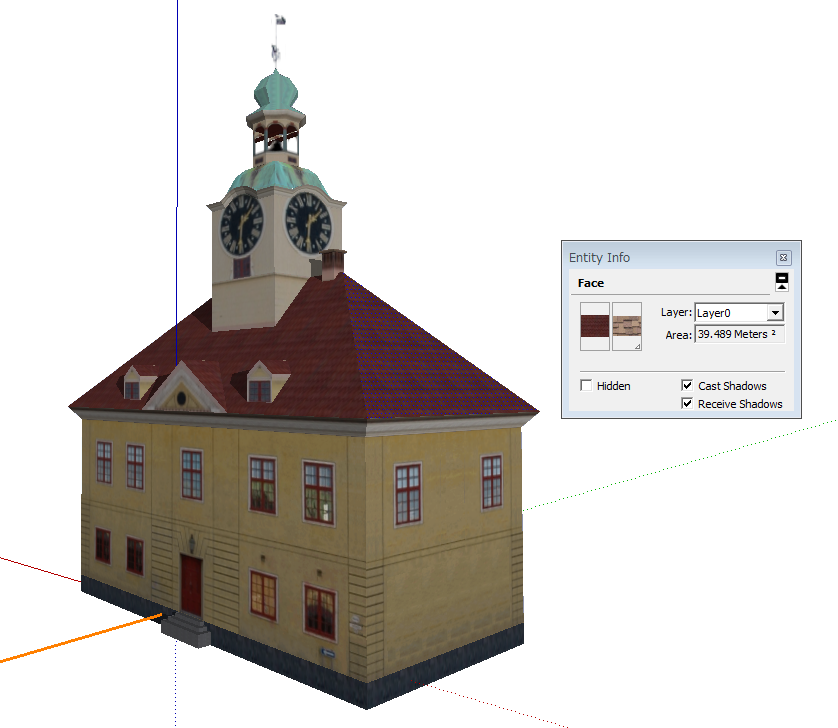 (©Google)
(©Google)
Specifying Front for this option will import the model into Shade3D as it appears in SketchUp.
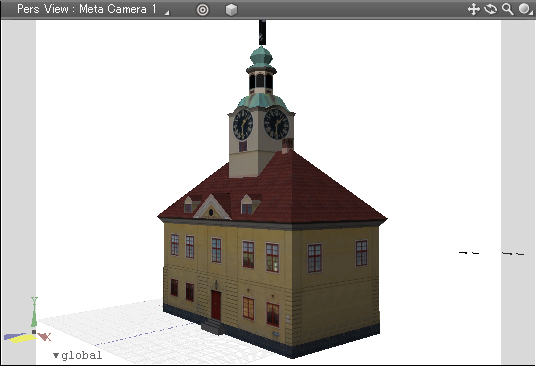
Specifying Back will import the model with the material of the back side of the roof showing. The material of other surfaces will depend on whether the Check another side checkbox is selected or not.
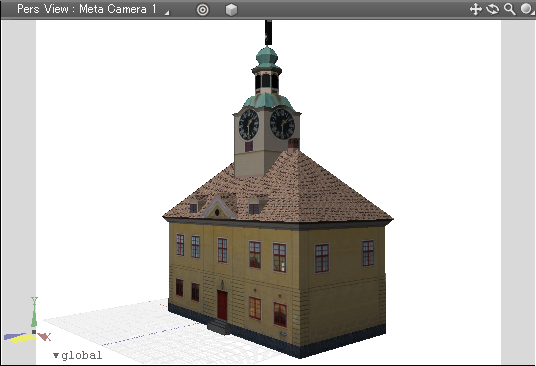
By specifying the layer when importing into Shade3D, the color set to the object's layer in SketchUp will be imported as a master surface and set to a Face Group. - Check another side
- When selected, if a material has not been applied to the specified face but it has for the opposite face, the material set to the opposite face is used instead.
The model on the left has materials applied only to the back faces. The model on the right has materials applied only to the front faces.
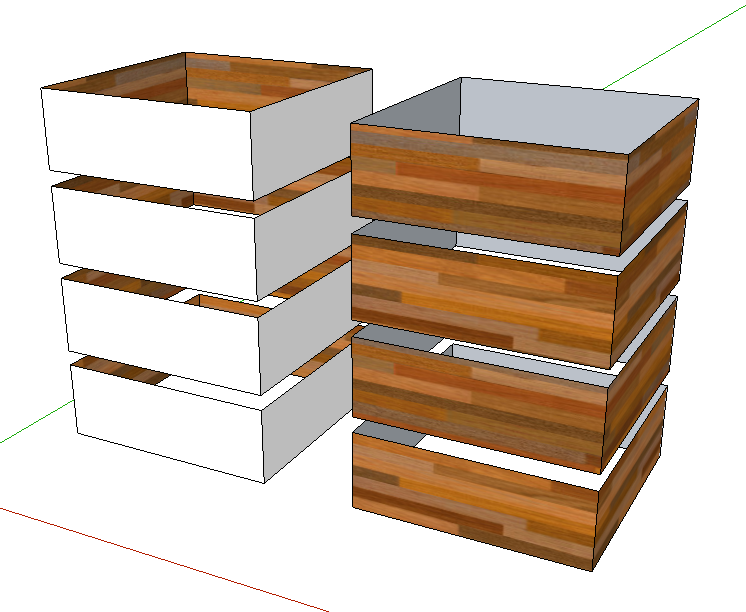
Below, Front has been specified for the side to import materials from, and the Check another side checkbox has been selected.
The left model does not have materials applied to the front faces, so the material on the back faces is used instead.
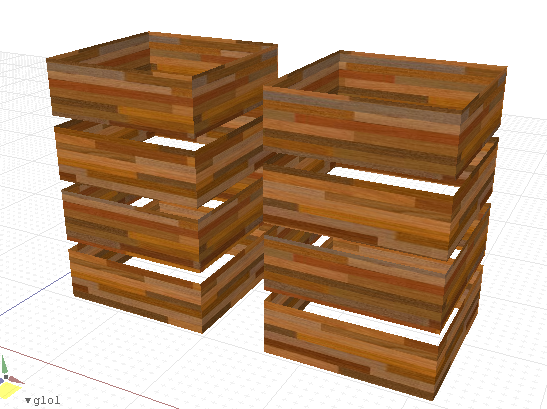
Here again Front has been specified for the side to import materials from, but the Check another side checkbox has been deselected.
No materials are imported for the model without materials applied to the front faces.
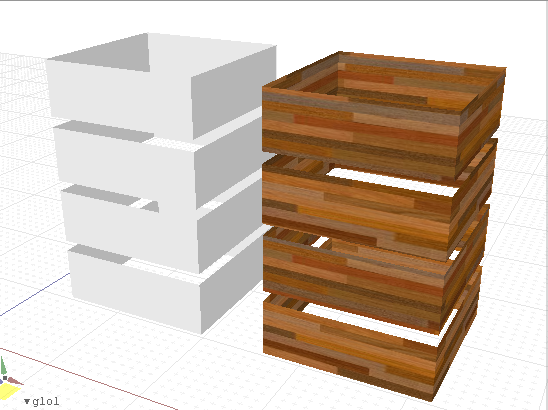
- Type Pop-up Menu
- Select All, Texture, Color, or Average Color for the type of materials to import.
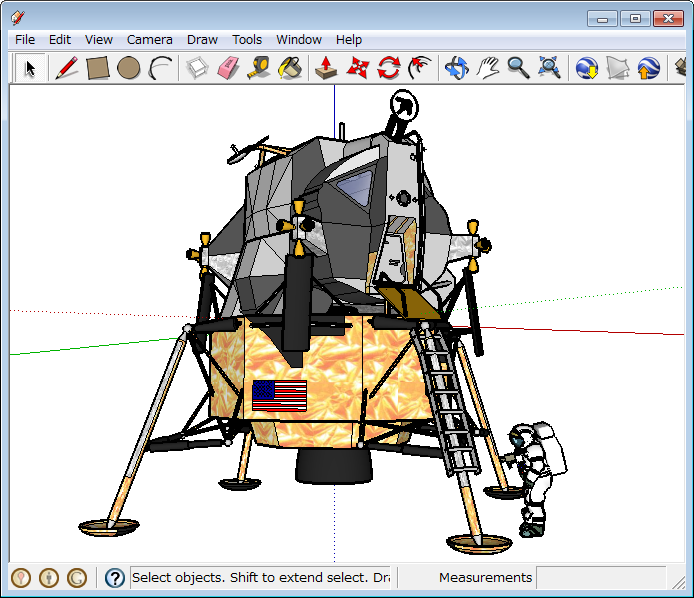
SketchUp model to import (© Google) - Texture overriding
- When a face has materials applied to both front and back sides, with one side being a texture and the other being a color, the texture will be imported as the material to use in Shade3D regardless of the Side pop-up menu setting if Texture overriding is selected.
This helps reduce unwanted import results for objects with mixed faces. Selecting this checkbox is recommended when importing objects with lots of mapped textures. - Bump mapping
- When selected, creates a bump map layer in the master surface when importing materials made from textures.
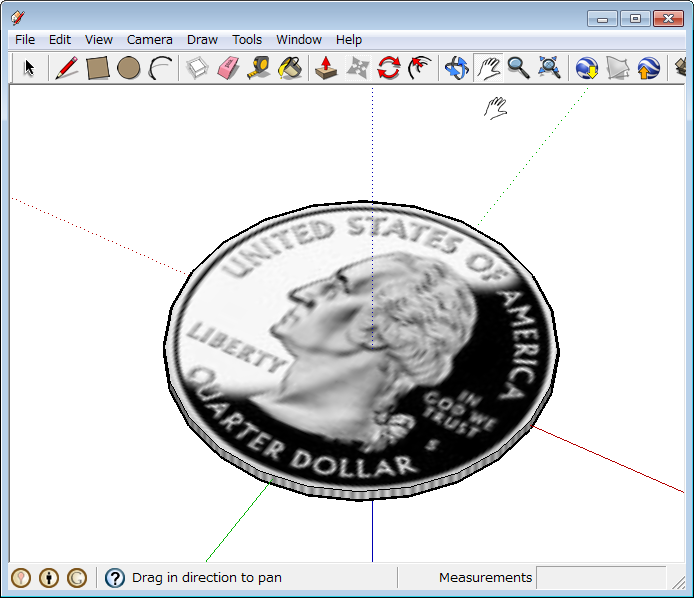
Model using textures in SketchUp (©Google) - Ignore error
- When selected, errors that occur when importing materials are ignored and the import process is continued without interruption. Materials that failed to import will not be applied to those faces.
- Use original name
- Using this option avoids a problem on Mac OS 10.6 (Snow Leopard) that causes crashes when importing certain files. This problem does not occur on other versions of Mac OS X or on Windows, so selecting this option is not necessary on those OS's.
When selected, a name similar to that of the material name specified in SketchUp is used for the master image created during the import. Searching for the original SketchUp material name is easier, but importing some files may cause Shade3D to crash.
When unselected, the material names are generated from the image file path. This allows files that would otherwise crash Shade3D to be imported properly.
- Import camera
- When selected, cameras in SketchUp are imported as camera objects. After the import finishes the active camera switches to the imported camera object.
Processing of Special Characters During Import
When importing objects with Boolean or other special characters in the component or group names of the SketchUp outline, special characters at the front of the name are prefixed with "fixed_" to disable their effects in Shade3D.
Working with Models with Materials Applied to a Mix of Front and Back Sides
In SketchUp materials can be applied to both the front and back sides of a face. Either the front or back side of a face can be set as the visible face of the model. When both these conditions are true the model may not import correctly even after adjusting the SketchUp Importer settings. To import the model correctly it may be necessary to delete the materials of unneeded faces in SketchUp.
A SketchUp model. Materials have been applied to all the faces.
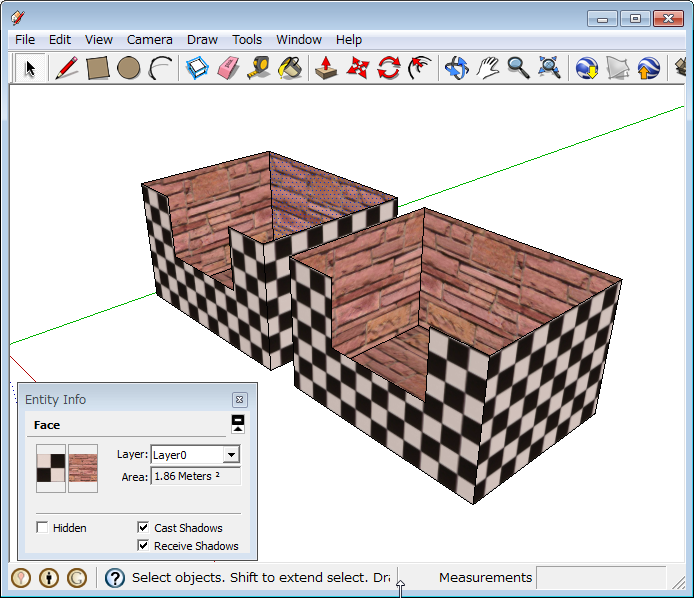
The model in the foreground has flipped faces.
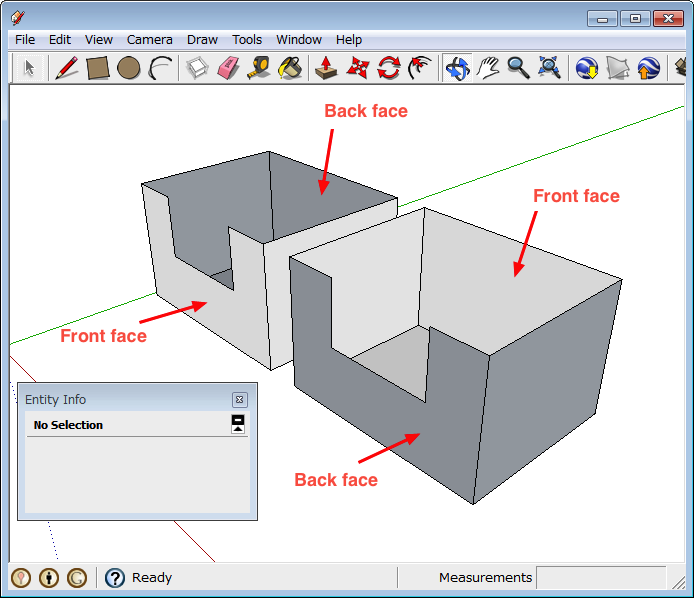
If the materials applied to the front faces are imported, the inside material of the foreground model will be imported.
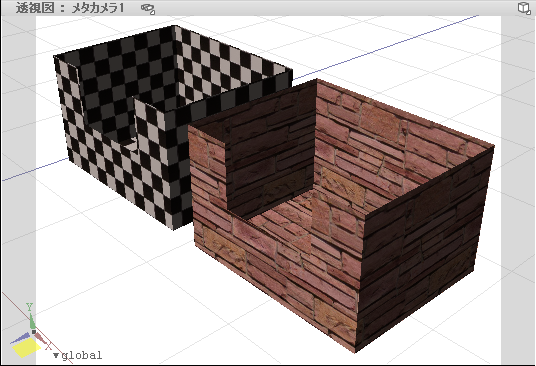
Conversely, if the materials applied to the back faces are imported, the wrong materials for the background model will be imported.
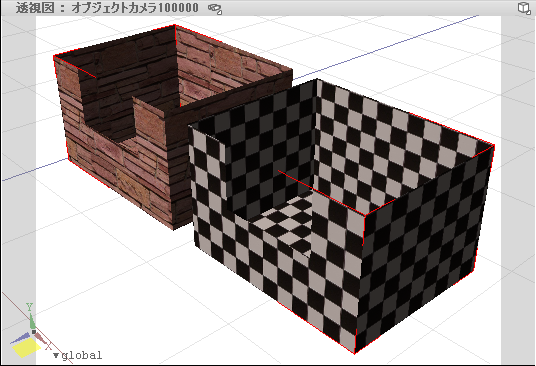
In this case, deleting the unneccessary materials in SketchUp will solve the problem. To delete a material in SketchUp, click the material to remove and select "none."
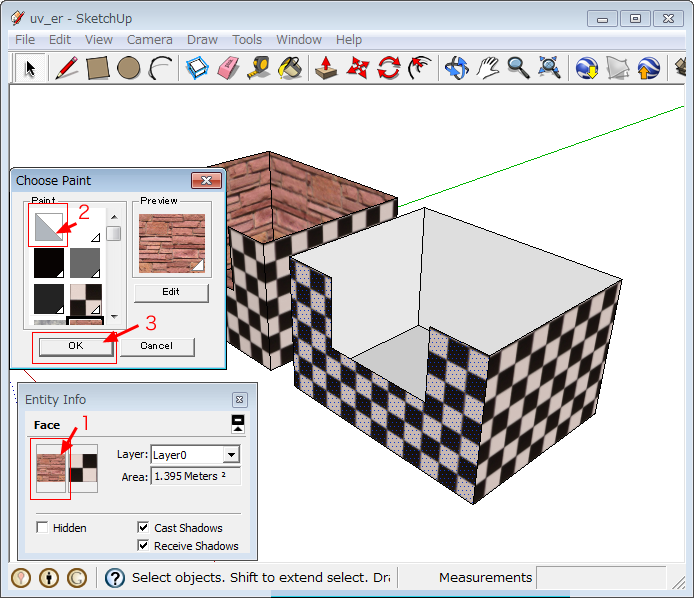
Below, Front has been specified for the side to import materials from, and the Check another side checkbox has been selected. The foreground model no longer has a material applied to the front faces so the back material is used instead, and both models are imported correctly.
